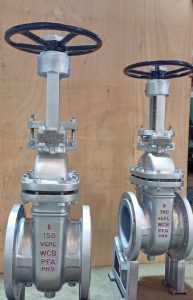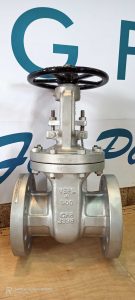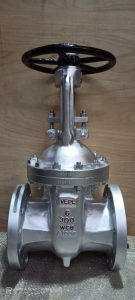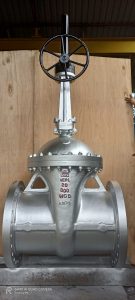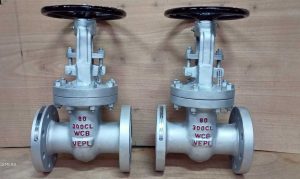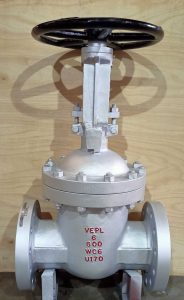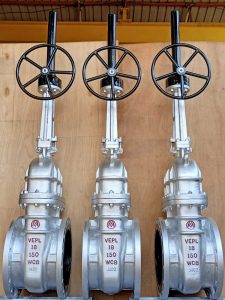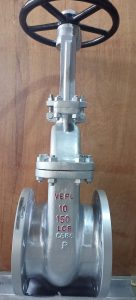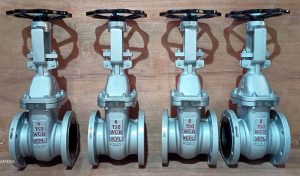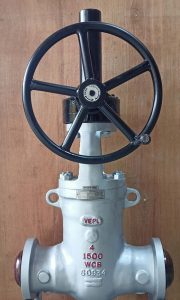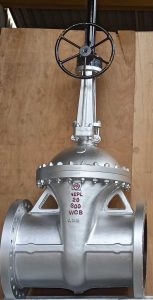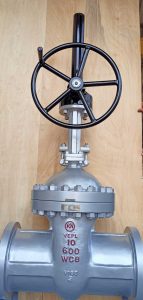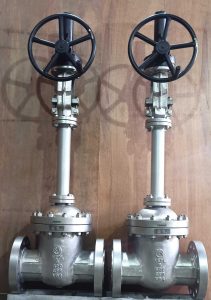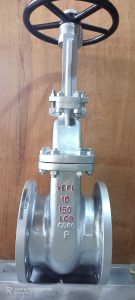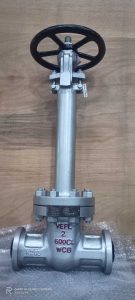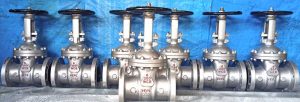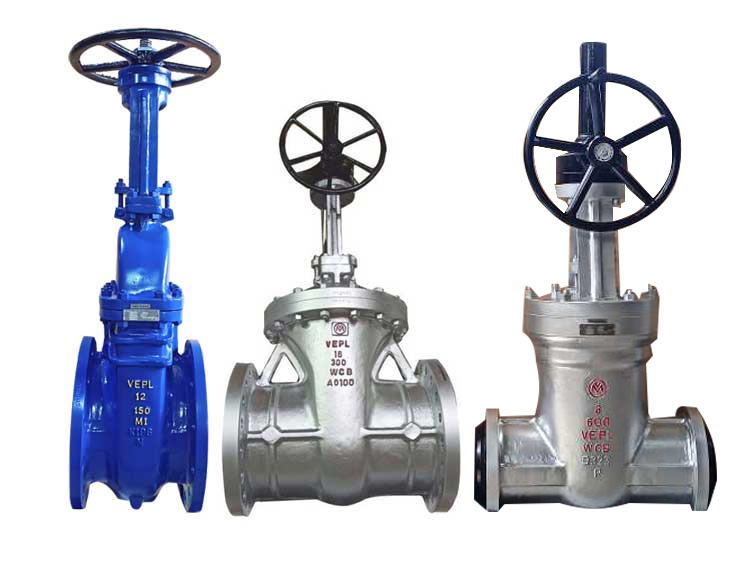
A gate valve, is a valve that opens by lifting a barrier (gate) out of the path of the fluid. A gate valve consists of a valve body, seat and disc, a spindle, gland, and a wheel for operating the valve. Gate valves are widely used for all types of applications and are suitable for both above-ground and underground installation. It is designed for fully open or fully closed service, gate valves are used extensively throughout the hydrocarbon, energy and process industries, petrochemical, offshore and onshore platform, chemical industries and power sectors.
Size: ½” up to 36“(DN 15 up to DN 900)
Class: 150#—2500#
Materials of Construction: Carbon Steels, Low Temperature Carbon Steel, Martensitic Steels, Austenitic Stainless Steel, Duplex Stainless Steels, Super Duplex Stainless Steels, Nickel Alloys, Nickel Aluminum Bronze, Hastelloy, Inconel, Titanium Alloy & Carbon Steel with Internal Corrosion Resistant Alloy (CRA) Overlay
Design Standard: API 600/602/603, ASME B16.34
Pressure/Temperature Rating: ASME B 16.34
Test (Inspection) Standard: API 598, API 6D, ISO 5208, BSEN 12266 Part-I
There are three different ways to categorize the gate valve.
Types of Disk
Solid taper wedge
– Flexible wedge
– Split wedge or Parallel disks Valve
Types of Body Bonnet Joint
– Screwed Bonnet
– Bolted Bonnet
– Welded-Bonnet
– Pressure Seal Bonnet
Types of Stem movement
– Rising Stem or OS & Y Type (Outside Stem and Screw Type)
– Non-rising Stem type
End Connection: Screwed, Socket Weld, Flanged–RF/FF/RTJ, Butt-Weld
Operator: Handwheel, Gear, Actuator (Pneumatic, Hydraulic, Electro-Hydraulic and Electric Motorised)


